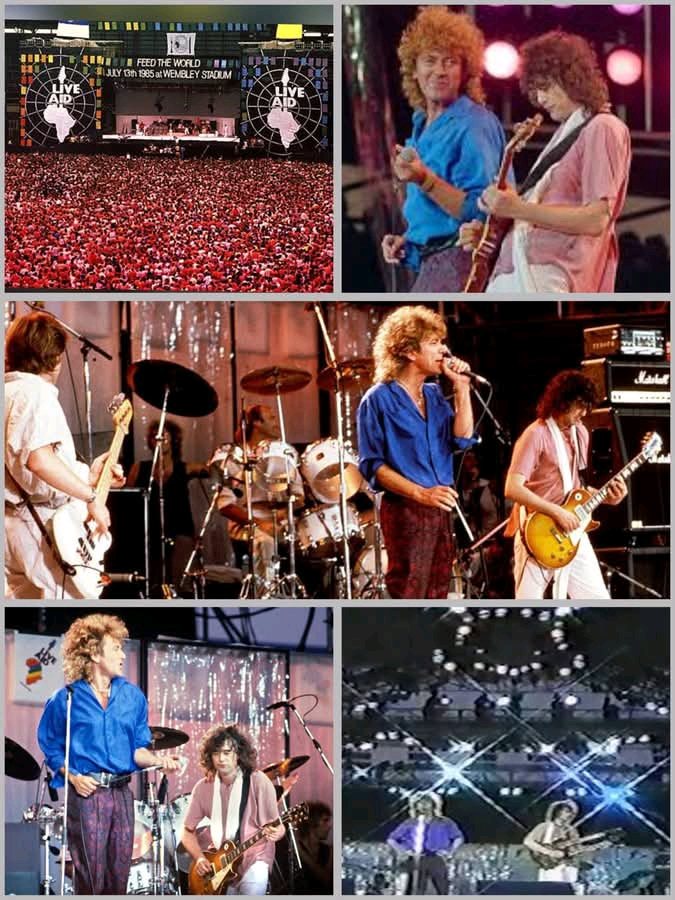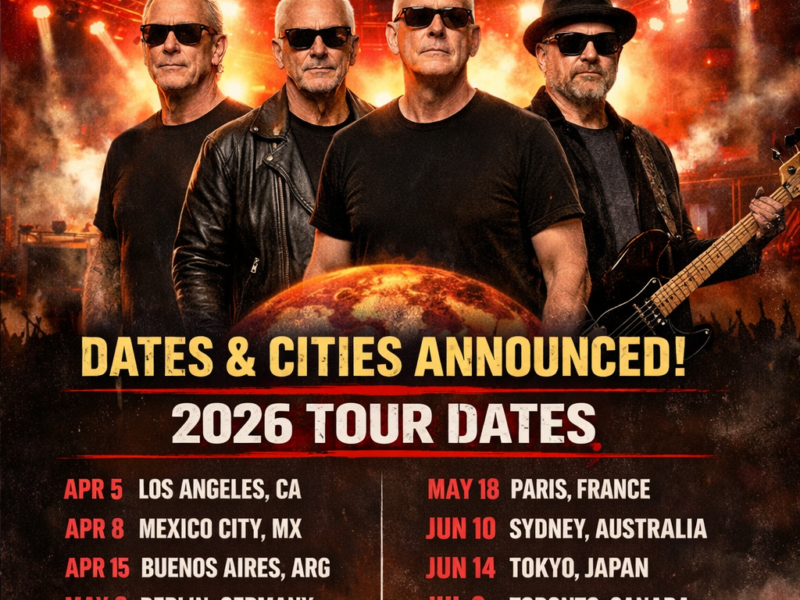**Live Aid 1985: A Historic Musical Event to End Famine**
On July 13, 1985, the world witnessed one of the most ambitious and impactful charity events in music history: Live Aid. Organized primarily by Bob Geldof and Midge Ure, the concert was conceived as a global effort to raise awareness and funds to combat the devastating famine in Ethiopia. Spanning two continents, the event united some of the biggest names in music, creating a day that resonated far beyond the stage, inspiring millions and setting a precedent for future benefit concerts.
**The Genesis of Live Aid**
The catastrophic famine in Ethiopia in the early 1980s drew international attention to the plight of millions suffering from starvation and drought. Recognizing the urgent need for a massive response, Bob Geldof, lead singer of The Boomtown Rats, took the initiative to organize a fundraising concert. With the help of Midge Ure, a Scottish musician and member of Ultravox, the idea quickly gained momentum. Their goal was not only to raise money but also to raise awareness about the famine, mobilizing governments and the public worldwide.
**The Global Broadcast and Venues**
Live Aid was broadcast live on radio and television across the globe, reaching an estimated audience of 1.9 billion people in over 150 countries. The concert was held simultaneously at Wembley Stadium in London and John F. Kennedy Stadium in Philadelphia, with various satellite and stage performances connecting the two venues. This unprecedented live broadcast made it possible for millions to experience the concert in real-time, creating a shared sense of purpose and urgency.
**Star-Studded Lineup**
The event featured an incredible lineup of artists, spanning multiple genres and generations. In the UK, acts like U2, Queen, David Bowie, The Who, Elton John, Mick Jagger, and Eric Clapton took to the stage. In the U.S., performers included Madonna, Led Zeppelin, Bob Dylan, The Cars, and Mick Jagger, among others. Notably, the concert also featured performances by local and lesser-known artists, emphasizing the collective effort.
**Led Zeppelin’s Performance**
One of the most anticipated moments of Live Aid was Led Zeppelin’s reunion on stage. Despite disbanding in 1980 following the death of their drummer John Bonham, Led Zeppelin reunited for this historic event. Their set was highly anticipated, as the band had not performed together publicly for several years. Led Zeppelin played a powerful 11-minute rendition of “Whole Lotta Love,” combined with parts of “The Immigrant Song” and “Stairway to Heaven,” captivating the massive audience both in person and watching worldwide.
Their performance was a highlight not only for its musical intensity but also for its symbolic significance—showing that even legendary bands could come together for a noble cause. Robert Plant’s vocals, Jimmy Page’s guitar riffs, John Paul Jones’s bass lines, and the return of John Bonham’s drums (through a pre-recorded track) created a moment of pure rock history. Although some critics noted the technical issues and the fact that the band was not at their peak due to internal tensions, the performance remains iconic. It marked one of the last times Led Zeppelin performed together publicly, adding emotional weight to their set.
**Other Notable Performances**
Queen’s electrifying set, with Freddie Mercury’s commanding presence, is often cited as one of the greatest live performances in rock history. Their rendition of “Radio Ga Ga,” “Hammer to Fall,” and “We Will Rock You/We Are the Champions” energized the crowd and viewers alike. U2’s heartfelt performance of “Bad” and “Where the Streets Have No Name” demonstrated their rising star power.
In the U.S., artists like Madonna, Tina Turner, and Mick Jagger brought their charisma to the stage. U2’s performance from Ireland was broadcast to the UK audience, emphasizing the global reach of the event. Other legendary acts such as David Bowie, The Who, and Elton John delivered memorable performances that underscored the diverse talent involved.
**Impact and Legacy**
Live Aid successfully raised over $125 million for famine relief, demonstrating the power of music as a tool for social change. The concert also heightened awareness of global issues, inspiring subsequent charity events and raising the profile of humanitarian causes. The event demonstrated that the music industry could unite across borders for a common purpose, setting a precedent for future benefit concerts like Live 8.
The performances, especially Led Zeppelin’s reunion, remain etched in history, symbolizing hope, unity, and the potential of collective action. The event’s legacy endures not only for the funds raised but also for the enduring spirit of compassion and activism it fostered.
**Conclusion**
Live Aid of 1985 was more than just a concert; it was a global movement that showcased the unparalleled power of music to inspire change. From legendary performances by Queen, U2, and Led Zeppelin to heartfelt contributions by countless artists, the event proved that when the world comes together, it can make a difference. Decades later, the memory of that day continues to motivate new generations to use their talents for humanitarian causes, reminding us all of the transformative power of music.


